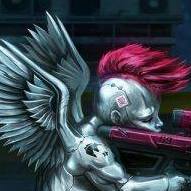bootloader & bootstrap difference?
Go to solution
Solved by Mira Yurizaki,
Bootloader is a piece of software that lives on storage (a hard drive, a flash chip somewhere, etc.) that tells the computer how to load the operating system. The basic gist of a computer booting up is:
- The CPU starts up and runs whatever program is the address of the reset vector.
- The program in the reset vector address is usually a system startup program to set the hardware and perform tests to make sure thing are alright.
- Afterwards, the system looks at all attached permanent storage devices.
- If the permanent storage device has a boot sector, it loads and runs that. This tells the computer how to read the drive and where the bootloader is, if there is one.
- The bootloader, as mentioned before, tells the computer how to load the operating system. Normally operating systems has its own startup programs (or perhaps just the kernel) located in a fixed location on the hard drive. The bootloader tells the computer where that location is.
Bootstrapping is the process I described above. It's shortened to just "booting"
















Create an account or sign in to comment
You need to be a member in order to leave a comment
Create an account
Sign up for a new account in our community. It's easy!
Register a new accountSign in
Already have an account? Sign in here.
Sign In Now